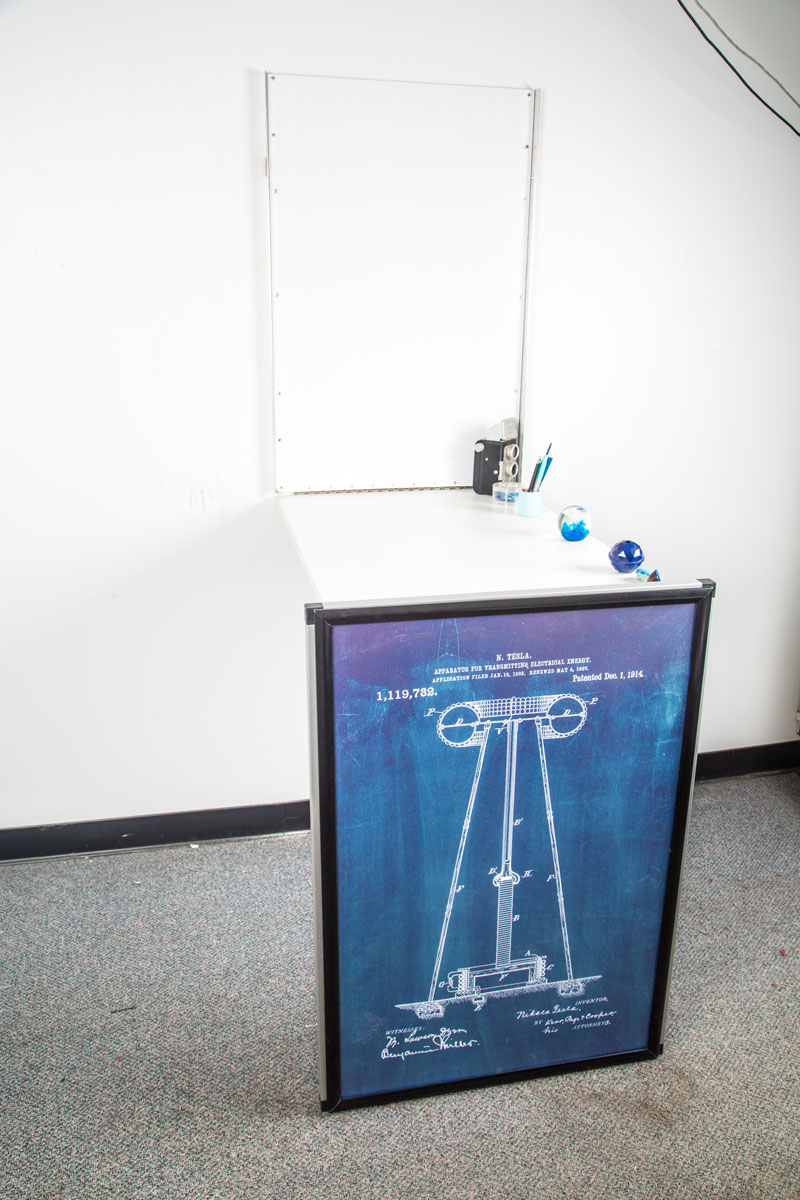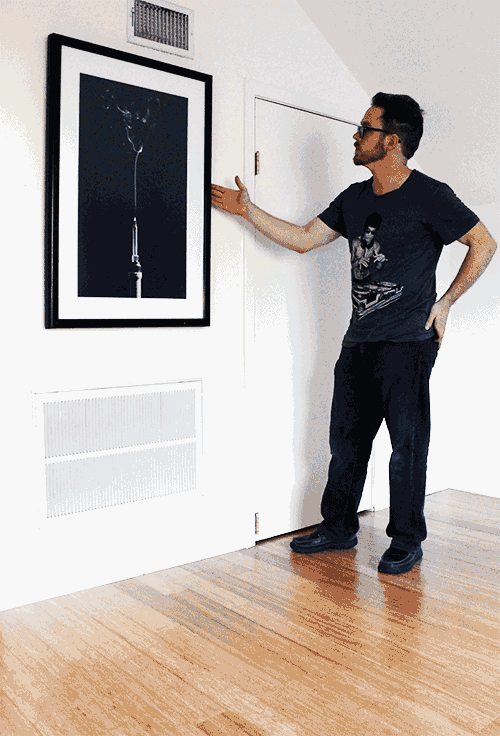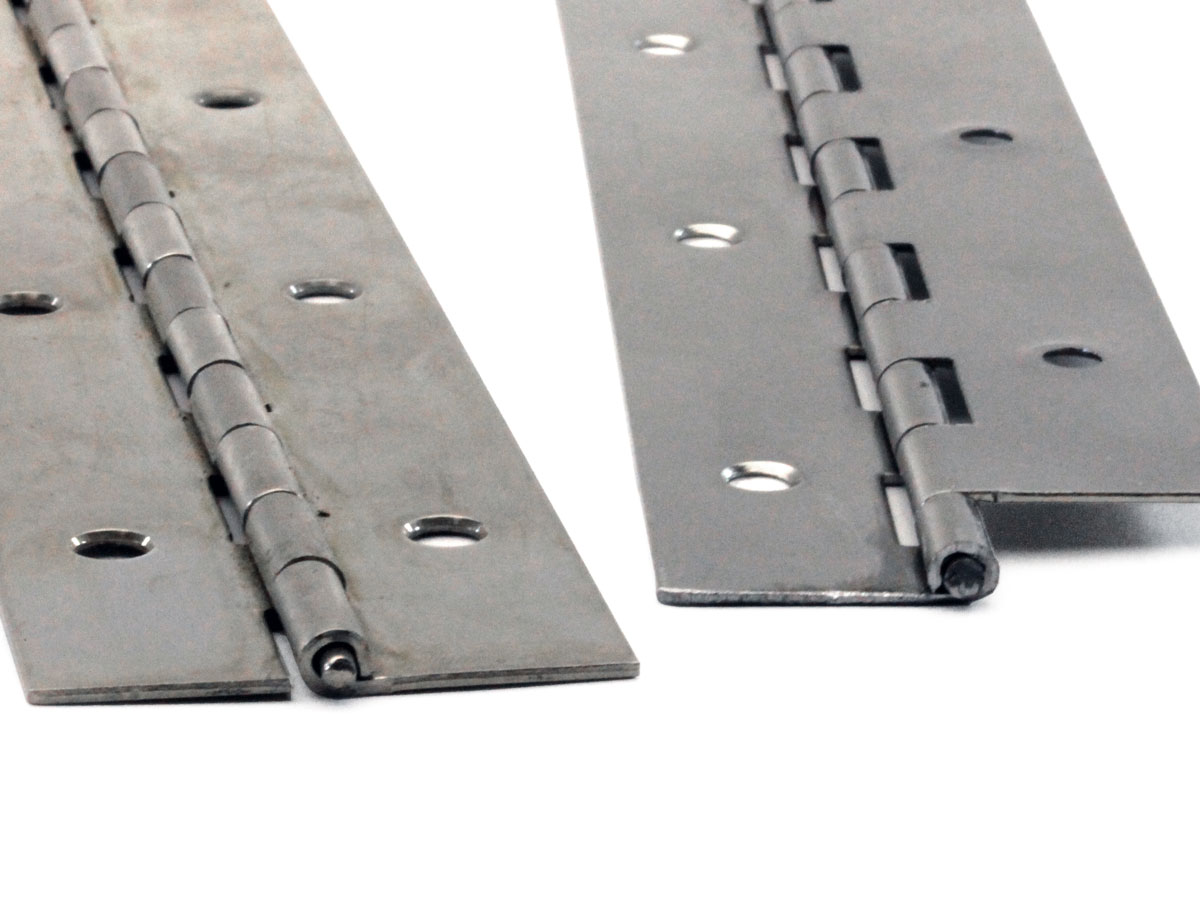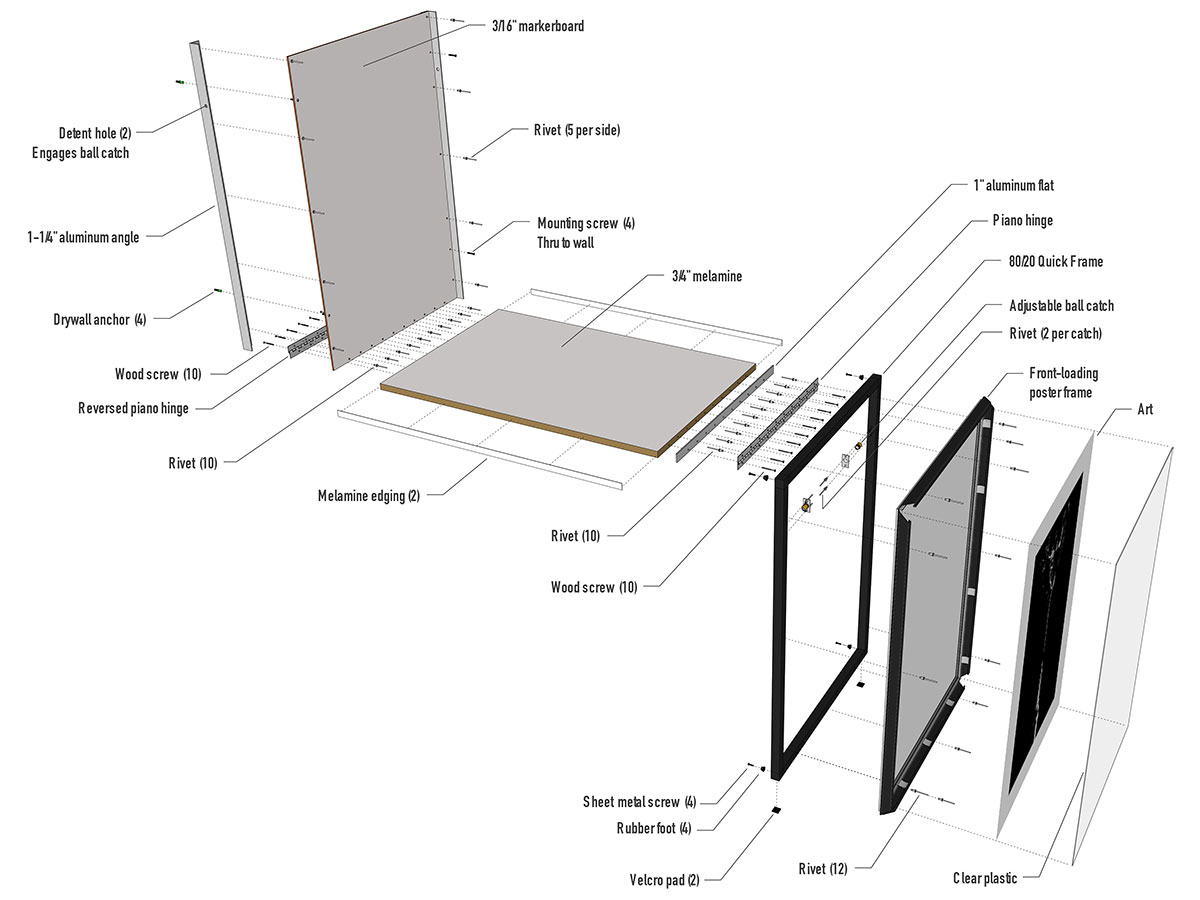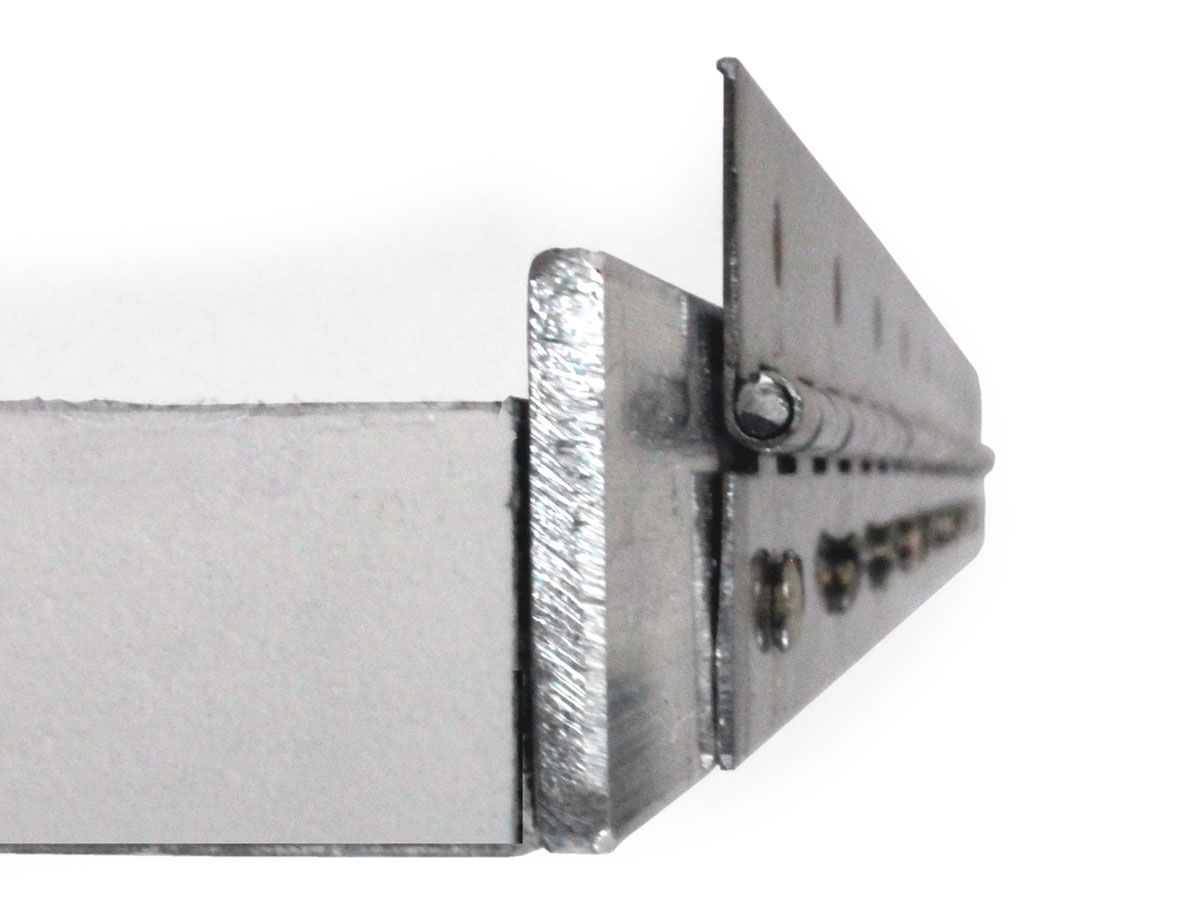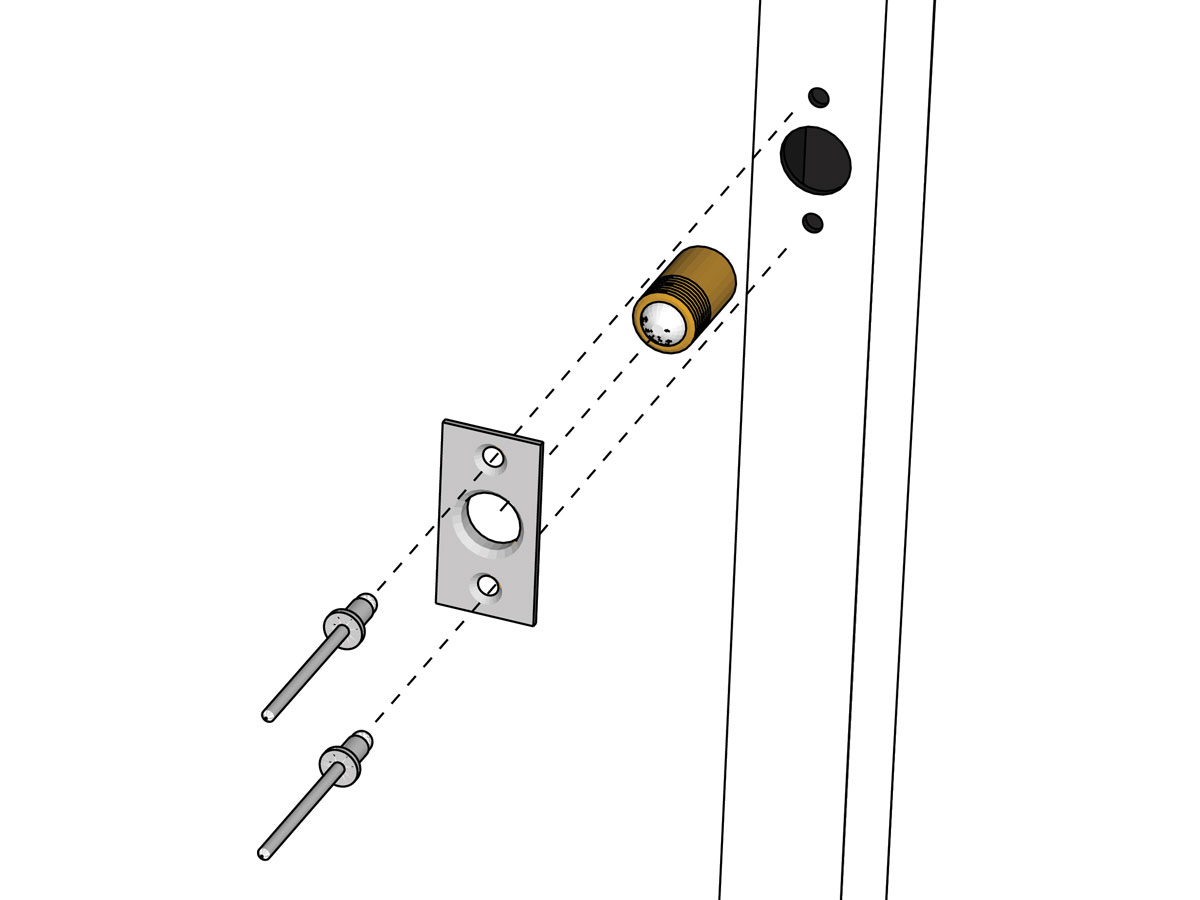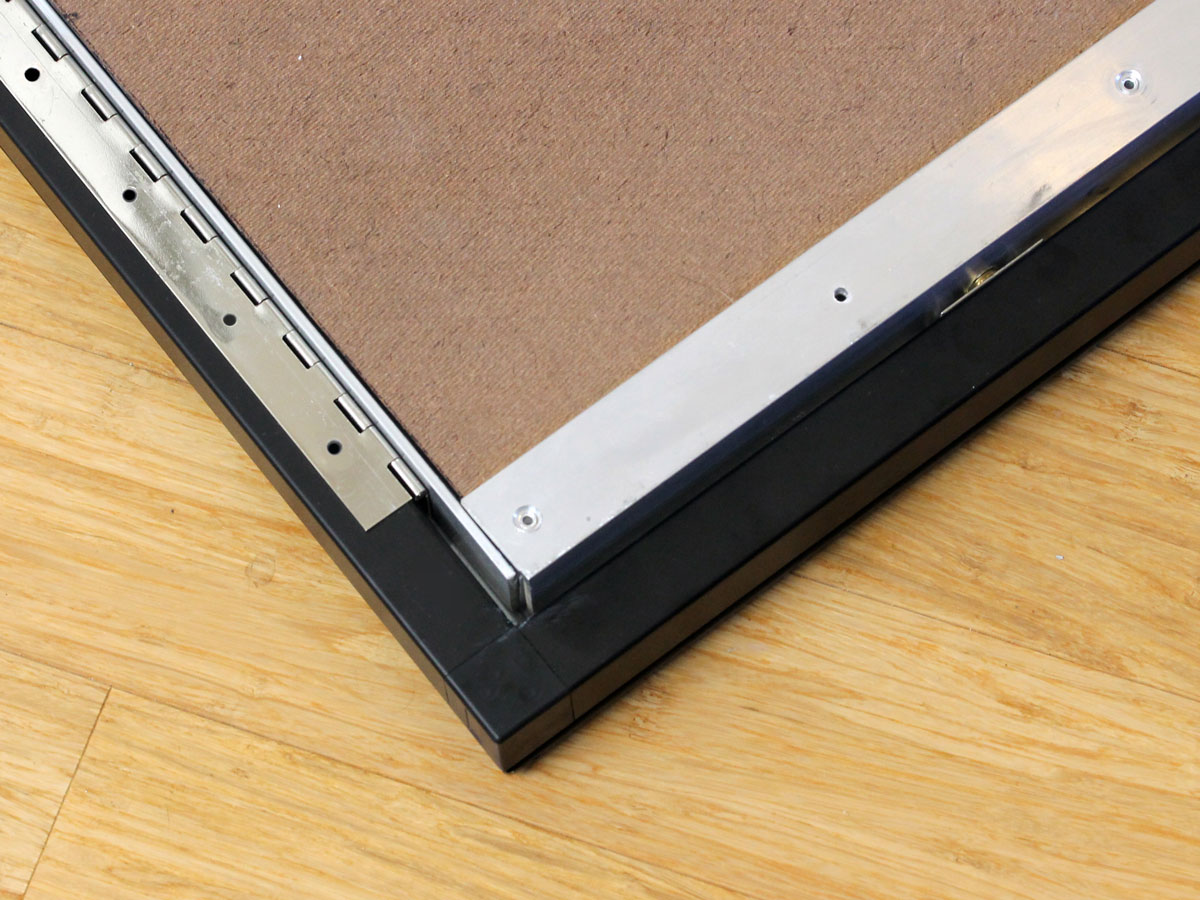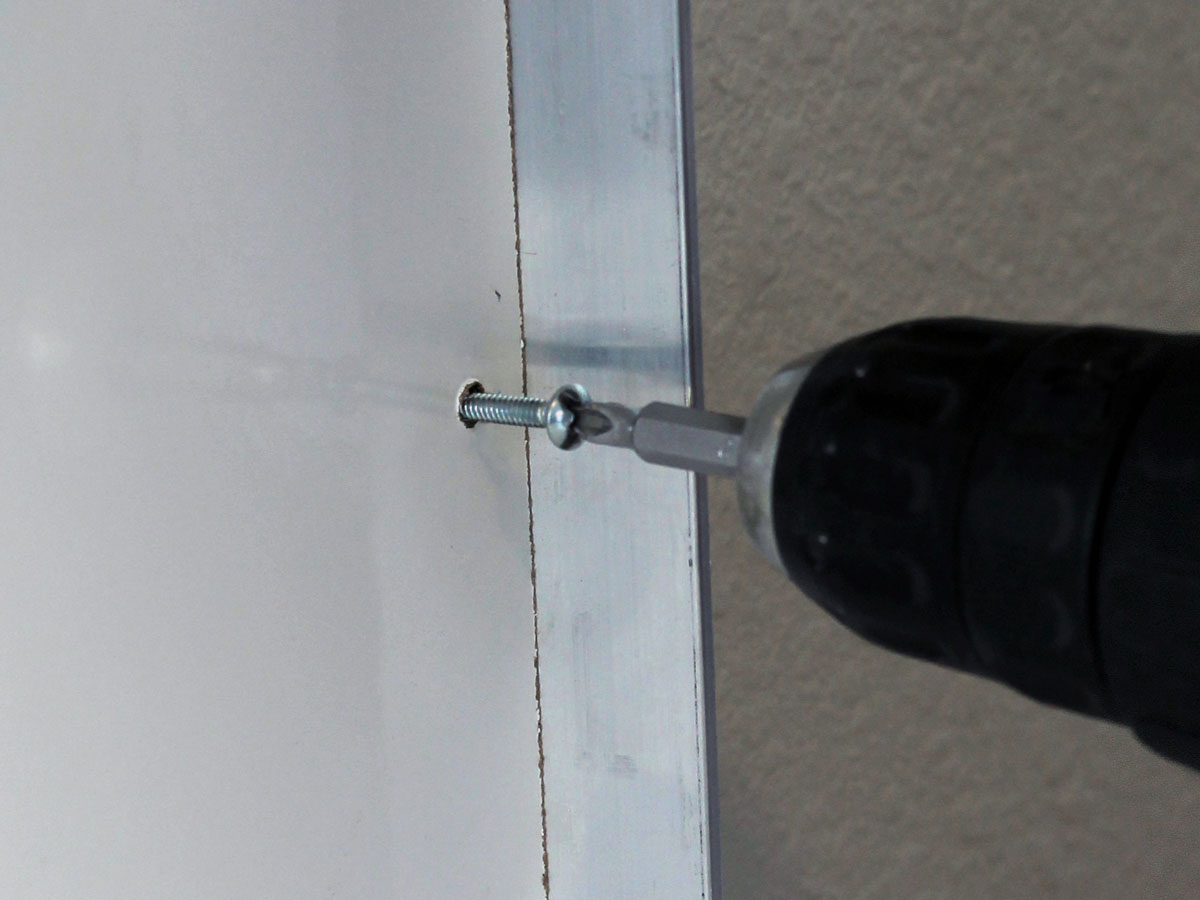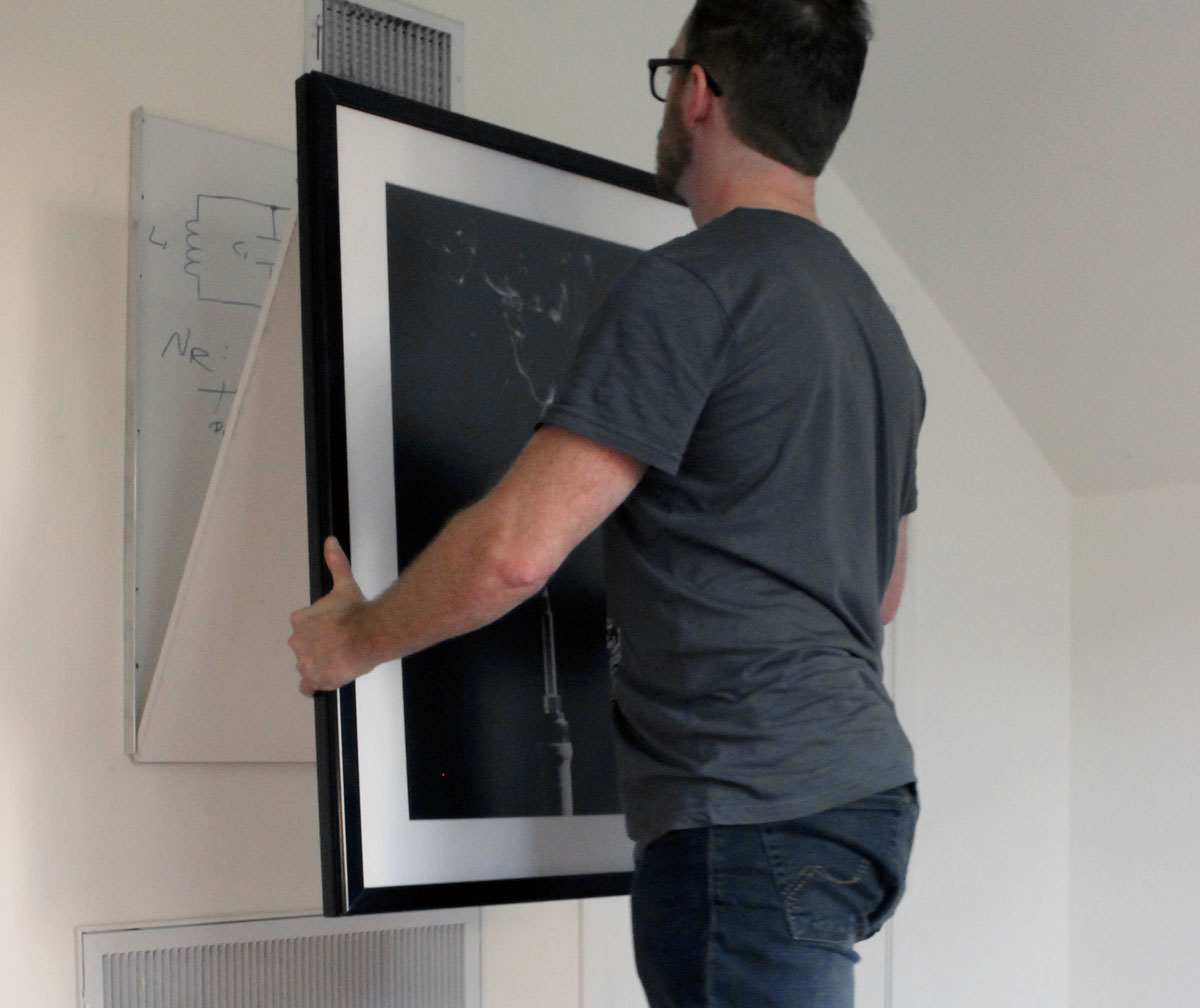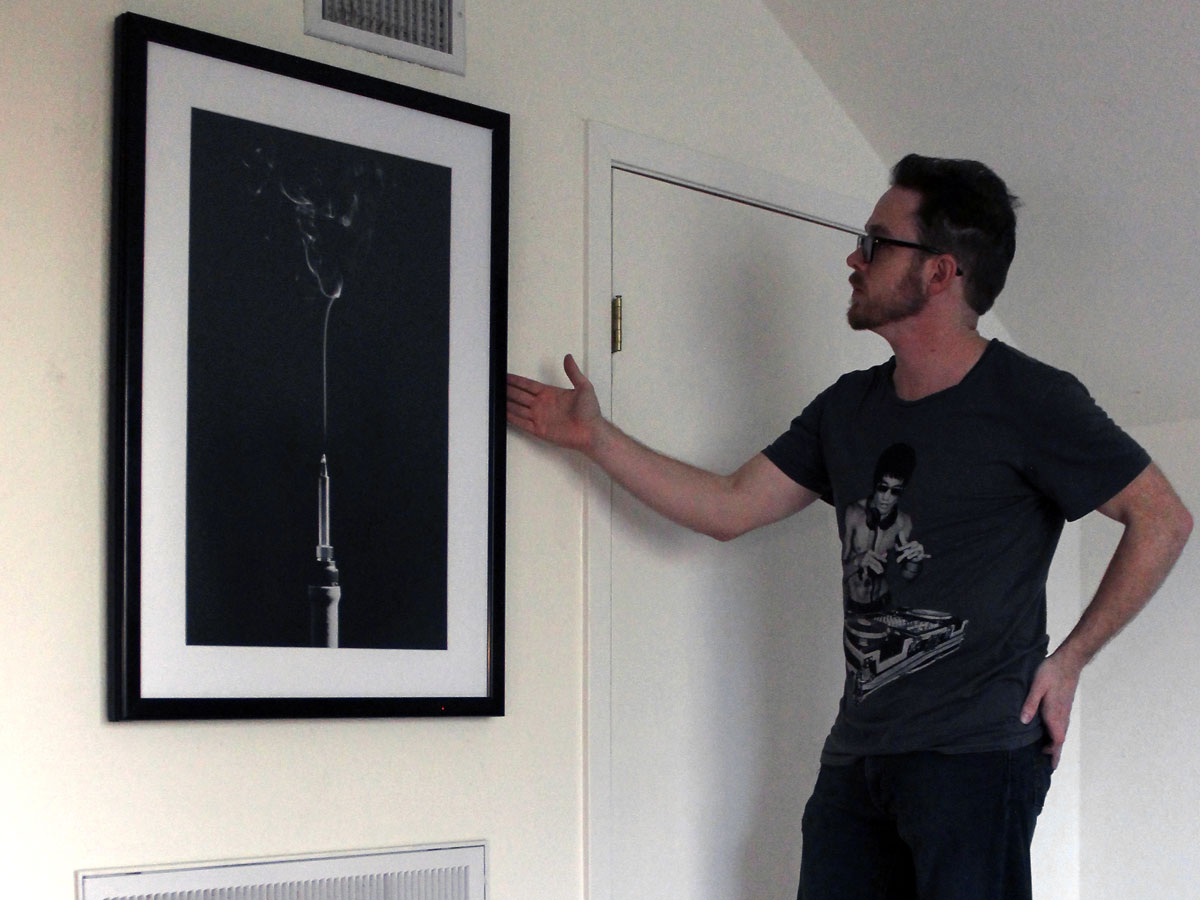I first saw this idea in the 1973 DIY classic Nomadic Furniture — a picture frame that folds down to become a table. Recently, I found a German site selling a similar design for almost $1,000. I’d always wanted to build one, so I took on the challenge of matching the Germans’ quality at a better price. My design is sturdy and easy to deploy, revealing a handy hidden whiteboard. When stowed, it protrudes less than 2″ from the wall, shows no fasteners, and locks securely in place. Part of the trick is using one standard piano hinge and one reversed hinge to make it all fold up tight.




